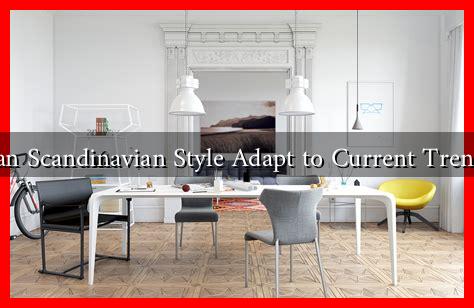-
Table of Contents
Can Scandinavian Style Adapt to Current Trends?
Scandinavian design has long been celebrated for its minimalist aesthetic, functionality, and connection to nature. Originating from the Nordic countries, this design philosophy emphasizes simplicity, clean lines, and a neutral color palette. However, as global design trends evolve, the question arises: can Scandinavian style adapt to current trends? This article explores the adaptability of Scandinavian design in the context of contemporary aesthetics, sustainability, and technology.
The Essence of Scandinavian Design
Before delving into its adaptability, it’s essential to understand the core principles of Scandinavian design:
- Minimalism: Focus on simplicity and decluttering.
- Functionality: Every piece serves a purpose, ensuring practicality.
- Natural Materials: Use of wood, leather, and textiles that connect with nature.
- Neutral Color Palette: Soft whites, grays, and earthy tones dominate the color scheme.
These principles have made Scandinavian design a timeless choice for many homeowners and designers. However, as trends shift towards bold colors, eclectic styles, and sustainable practices, the question remains: can this classic style evolve?
Current Trends Influencing Design
Several contemporary trends are shaping the design landscape, including:
- Biophilic Design: Integrating nature into living spaces.
- Maximalism: A shift towards bold colors and patterns.
- Sustainability: A growing emphasis on eco-friendly materials and practices.
- Smart Home Technology: The integration of technology into everyday living.
Adapting to Sustainability
One of the most significant trends today is sustainability. Scandinavian design has always had a strong connection to nature, making it well-positioned to adapt to this trend. Many Scandinavian brands are leading the way in sustainable practices:
- IKEA: The furniture giant has committed to using only renewable or recycled materials by 2030.
- Muuto: This design company focuses on creating products that are both functional and sustainable, using recycled materials wherever possible.
By emphasizing eco-friendly materials and production methods, Scandinavian design can seamlessly integrate into the current sustainability movement, appealing to environmentally conscious consumers.
Incorporating Bold Colors and Patterns
While Scandinavian design is known for its neutral palette, there is a growing trend towards maximalism that embraces vibrant colors and intricate patterns. Designers are beginning to experiment with:
- Accent Walls: Using bold wallpaper or paint to create focal points.
- Textiles: Incorporating colorful cushions, throws, and rugs that add warmth and personality.
- Art Pieces: Displaying large, eye-catching artwork that contrasts with minimalist furniture.
For example, the Danish brand HAY has started to introduce more colorful and patterned items into their collections, showcasing how Scandinavian design can evolve while maintaining its core principles.
Embracing Technology
The rise of smart home technology is another trend that Scandinavian design can adapt to. With the increasing demand for smart appliances and integrated technology, designers are finding ways to incorporate these elements without compromising the aesthetic:
- Smart Lighting: Using sleek, modern fixtures that blend seamlessly with minimalist designs.
- Integrated Technology: Designing furniture that incorporates charging stations and smart features.
Brands like Bang & Olufsen exemplify this integration, offering audio solutions that are both functional and stylish, aligning with Scandinavian design principles.
Conclusion
In conclusion, Scandinavian design is not only capable of adapting to current trends but is also thriving in the face of change. By embracing sustainability, incorporating bold colors and patterns, and integrating technology, Scandinavian style can remain relevant and appealing to modern consumers. As the design landscape continues to evolve, the adaptability of Scandinavian design will ensure its place in contemporary interiors, proving that timeless principles can coexist with modern innovations.

